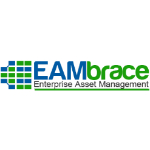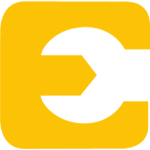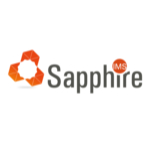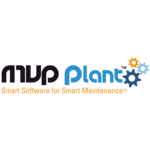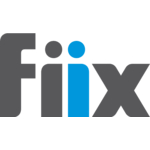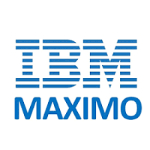Mainpac is more than just software it’s a powerful solution designed to streamline and optimize your maintenance and asset management processes. As a leading provider of maintenance and asset management solutions, Mainpac offers a suite of tools an...Read Mainpac Reviews
List of Best EAM Software
Showing 10 of 32 productsEAMbrace is a software system designed to simplify and optimize the management of enterprise assets. With its user-friendly interface features, EAMbrace stands out as a top choice for businesses seeking to streamline their asset management processes...Read EAMbrace Reviews
EZOfficeInventory is a complete solution to efficiently manage your organizations assets. With its user-friendly interface and powerful features, EZOfficeInventory simplifies inventory tracking and streamlines asset management processes. Say goodbye...Read EZOfficeInventory Reviews
eMaint CMMS is a software that assists businesses of all sizes in managing and maintaining their assets with ease and efficiency. With its user-friendly interface and robust features, eMaint CMMS streamlines maintenance operations, increasing product...Read eMaint CMMS Reviews
SapphireIMS is a leading IT operations and service management software that offers a complete solution for managing and monitoring IT assets, applications, and infrastructure. With its user-friendly interface features, SapphireIMS helps organizations...Read SapphireIMS Reviews
Ramco EAM on Cloud provides advanced and all-inclusive cloud-based Asset Management software, which is seamlessly integrated with financials and HCM, creating a unified platform. Ramco EAM software is futuristic and caters to modern needs...Read Ramco EAM Reviews
UpKeep Asset is a solution for managing and tracking all your companys assets with ease. Say goodbye to the hassle of manual record-keeping and hello to a streamlined is a process with UpKeeps user-friendly interface. Simplify your asset management t...Read UpKeep Asset Reviews
MVP One CMMS is a solution for all your maintenance and asset management needs. With its user-friendly interface and robust features, MVP One CMMS streamlines processes and increases efficiency. Empower your team and take control of your facilities w...Read MVP One CMMS Reviews
Fiix is a leading software solution that is transforming the way maintenance and asset management is done. With its user-friendly interface features, Fiix makes it easier for businesses of all sizes to manage their assets and maximize their productiv...Read Fiix Reviews
IBM Maximo is a leading enterprise asset management software that streamlines and optimizes business operations for organizations of all sizes. With its powerful tools for managing assets, tracking work orders, and analyzing data, Maximo helps busine...Read IBM Maximo Reviews
- What Is EAM Software?
- Top Reasons Why Businesses Need EAM Software?
- What Are the Top Key Features of EAM Software?
- What Are the Top Benefits of EAM Software?
- What Are the Steps to Choose the Right EAM Software?
- What Are the Types of EAM Software for Different Industries?
- What Are the Technology Trends for Best EAM Software?
- What Are the Deployment Options for EAM Software?
What Is EAM Software?
The acronym EAM denotes Enterprise Asset Management software. This program is designed to enhance operational efficiency and optimize asset use, hence enabling organizations to minimize operating expenses and maximize returns.
The primary benefits associated with Enterprise Asset Management software encompass enhanced asset management, heightened cost savings, higher asset use, and expanded asset availability. Enterprise Asset Management (EAM) software enables firms to enhance their asset tracking and performance monitoring capabilities.
This program facilitates the consolidation of pertinent data pertaining to each asset into a unified system, providing business proprietors with a convenient means of simultaneously assessing all their assets. Moreover, enterprise asset management (EAM) software applications enable organizations to discern potential areas for enhancing their asset management procedures.
One illustrative instance involves the utilization of predictive maintenance tactics by businesses to enhance their ability to anticipate future maintenance requirements and mitigate unforeseen periods of operational inactivity.
Enterprise Asset Management software additionally furnishes organizations with a suite of tools that facilitate the analysis of their assets. Organizations have the capacity to acquire valuable knowledge regarding the patterns of asset utilization, enabling them to make informed decisions regarding resource allocation for optimal asset utilization.
This program facilitates the identification of assets that necessitate increased maintenance or replacement, hence streamlining the process for business owners. This practice enhances the effectiveness of their resources and aids in the reduction of their overall operational expenditures.
In summary, the best EAM software serves as a potent instrument for enterprises seeking to efficiently oversee and uphold their assets while optimizing asset returns. The utilization of asset management systems can facilitate the optimization of firms' asset management procedures and the reduction of operating expenses through enhanced tracking and analysis capabilities.
Top Reasons Why Businesses Need EAM Software?
1. Streamlining complex processes: An efficient enterprise asset management (EAM) software has the capability to streamline, enhance, and mechanize diverse asset management procedures, including monitoring, LEAN audits, and metrics.
2. Preventive maintenance: The use of automatic notifications, such as emails or SMS messages, facilitated by Enterprise Asset Management software, can effectively streamline preventive maintenance tasks.
This automation process contributes to significant cost savings for organizations by minimizing the need for extensive maintenance expenditures.
3. Improved asset performance and efficiency: EAM systems provide the capability to monitor the performance and efficiency of assets, hence facilitating the planning of maintenance activities and minimizing periods of downtime.
4. Risk Mitigation: The utilization of EAM asset management software can effectively mitigate the potential for accidents and liabilities by guaranteeing the appropriate maintenance and optimal condition of assets.
5. Data Management: EAM software facilitates the monitoring of asset performance, trends, and analytics through the provision of real-time data updates, thereby empowering businesses to make informed and rational decisions.
6. Regulatory Compliance Tracking: By utilizing Enterprise Asset Management (EAM) software, an organization can effectively store and arrange compliance records, discern areas requiring compliance management attention, and mitigate the risk of future financial penalties.
7. Reporting and Analytics: Enterprise asset management EAM software has the capability to offer precise insights based on data, including the study of asset failure rates, examination of contract data, and evaluation of asset use patterns.
8. Smart Inventory Management: The utilization of Enterprise Asset Management (EAM) software allows firms to effectively monitor and track the inventory levels of consumables and essential supplies. This capability has the potential to yield cost savings and enhance overall profitability.
9. Warranty Management: An Enterprise Asset Management (EAM) system has the capability to effectively oversee warranty management and service contracts pertaining to assets, as well as preserve pertinent documentation and records associated with any modifications or alterations.
10. Document Storage: EAM software can effectively store a comprehensive range of asset-related documents, including but not limited to drawings, operation instructions, manuals, and other relevant materials.
11. Resource Planning: By employing precise data analysis and predictive modeling, Enterprise Asset Management (EAM) software can facilitate the strategic allocation of resources and budgetary distribution, thereby optimizing the operational efficiency of an organization's assets.
12. Automated Scheduling: Best enterprise asset management software provides the capability to automate many preventative maintenance operations, including but not limited to scheduling, analytics, and vendors management.
13. Security: By implementing multi-layer authentication procedures, Enterprise Asset Management (EAM) software may effectively enhance the security of assets by mitigating the risks associated with theft and cyber-attacks.
14. Reduce Costs: By implementing multi-layer authentication procedures, Enterprise Asset Management (EAM) software may effectively enhance the security of assets, safeguarding them against potential theft and cyber-attacks.
15. Improved Governance: EAM systems have the capacity to enhance organizational transparency and governance by effectively monitoring and managing assets.
What Are the Top Key Features of EAM Software?
1. User Management: A proficient asset management software should include functionalities for user administration, encompassing the ability to generate, delete, and modify user accounts to regulate personnel's access to information within the system.
2. Asset/Inventory Tracking: This functionality facilitates the monitoring of assets and inventory management through the identification of various aspects, including serial numbers, make, model, and other relevant information. This enables the convenient retrieval of data inside the system.
3. System Profiles and Settings: This functionality facilitates the seamless personalization of the system, encompassing the ability to define various configurations such as schedules, policies, alarms, and other related parameters.
4. Automated Workflow: The utilization of automation functionality can be advantageous across many contexts, including the automated dissemination of notifications to personnel upon the attainment of a specific threshold or the requirement for maintenance of an asset or inventory.
5. Automated Notification: This functionality facilitates the dissemination of alerts to assigned personnel if there is a modification in the status of an asset or inventory, so guaranteeing that personnel are duly informed about any alterations that take place.
6. Reports & Analytics: The production of reports and analytics plays a crucial role in the functionality of enterprise asset management EAM software, as it encompasses the creation of tailored reports for individual objects or specific groups of things, along with the provision of visual representations to enhance the decision-making process.
7. Integration & Connectivity: This functionality facilitates the seamless integration of several programs and databases, hence offering significant advantages to large enterprises with intricate asset and inventory management requirements.
8. Security & Access Controls: To maintain the integrity and confidentiality of data and information, asset/inventory management software must have robust security procedures and access control measures. These methods are designed to restrict access solely to authorized people, thereby mitigating the risk of unauthorized individuals gaining entry to sensitive data.
What Are the Top Benefits of EAM Software?
1. Improved team collaboration: Enterprise Asset Management EAM software promotes improved collaboration among team members, facilitating effective communication, information sharing, and collaborative project development.
2. Increased workflow efficiency: The enterprise asset management system facilitates enhanced workflow efficiency and operational effectiveness for teams through the optimization of processes and the provision of task and project management and tracking capabilities.
3. Enhanced productivity: Enterprise Asset Management (EAM) software facilitates the automation of routine tasks and the elimination of labor-intensive and time-consuming procedures, hence leading to enhanced productivity.
4. Centralized organization: Enterprise Asset Management (EAM) software provides a centralized platform that enables teams to enhance their ability to effectively manage resources, documents, processes, and information within a business.
5. Visibility and control: The best enterprise asset management software offers enhanced visibility and control, enabling teams to remain well-informed and make decisions based on a higher level of information.
6. Enhanced data security: Enterprise Asset Management (EAM) software provides comprehensive security measures that effectively safeguard data and mitigate the risk of unwanted access.
7. Lower operating costs: Through the implementation of streamlined processes and the automation of duties, Enterprise Asset Management (EAM) software effectively minimizes operational expenses and facilitates cost savings.
What Are the Steps to Choose the Right EAM Software?
1. Identify your team's needs: Prior to commencing the process of choosing corporate team collaboration software, it is imperative to assess and evaluate the specific requirements of your team. What forms of communication and collaboration are required by your team?
Does it exhibit complexity, possess multiple facets, and necessitate a substantial degree of intricacy and integration?
Alternatively, does it possess a more straightforward and sequential nature? Understanding the everyday endeavors and objectives of one's team serves as the foundational step in the process of choosing the most suitable EAM software.
2. Consider Your Budget: The cost of team collaboration software is a significant consideration when making a selection. By developing a comprehensive comprehension of your financial constraints, it becomes possible to discern the appropriate strategies that align with your fiscal objectives.
3. Evaluate Your Options: Once equipped with an understanding of the specific needs and financial resources of your team, it becomes possible to discern software solutions available in the market that align with those particular specifications.
Please analyze the various features and capabilities provided by the diverse enterprise team collaboration software options that are currently accessible.
4. Consider User Experience: It is imperative to take into account the user experience while making a decision on enterprise team communication software. Seek out solutions that provide a user-friendly interface characterized by a fluid, intuitive, and effortless user experience.
5. Consider Integrations with Your Other Software: In the event that your firm is already utilizing other software or apps, it is important to ascertain the compatibility of the team communication software you intend to adopt with these existing systems. Alternatively, allocate sufficient time to conduct a thorough study on the compatibility of various solutions with your existing tools.
6. Gather Feedback from Your Team: In conclusion, it is advisable to choose the best EAM software that is comprehensible and user-friendly for your staff. Solicit feedback from the team members who will be utilizing the program, and collate their input and preferences.
7. Implement and Test: Enterprise asset management system, it is advisable to conduct testing in order to verify its functionality aligns with the intended expectations. Execute the software implementation process and utilize the trial period to ascertain its alignment with the comprehensive requirements of your team.
What Are the Types of EAM Software for Different Industries?
There are several types of enterprise application software (EAM) available for different industries, including:
1. Customer Relationship Management (CRM) - Top EAM software application facilitates the enhancement of customer connections for organizations through the systematic monitoring and administration of customer data.
2. Enterprise Resource Planning (ERP) - An integrated suite of ERP applications is employed for the purpose of managing many operational aspects of a firm, including financials, human resources, and commodities inventory.
3. Supply Chain Management (SCM) - Enterprise asset management software employed for the purpose of overseeing and controlling the movement of goods and services from suppliers to clients.
4. Manufacturing Execution System (MES) - The best EAM software is specifically developed to oversee and regulate the many tasks involved in the production and manufacturing processes.
5. Business Intelligence (BI) - The software employed for the purpose of offering comprehensive analysis and understanding of client data, trends, and performance.
6. Document Management System (DMS) - The software application facilitates the management and retrieval of digital documents, including contracts, photographs, and video files, for organizational purposes.
7. Taxation and Regulatory Compliance - Software programs are utilized by firms to enhance their efficiency in adhering to tax and regulatory obligations.
8. Fleet and Asset Management - Software programs are utilized within organizations to effectively manage and monitor various assets such as equipment, vehicles, and resources that are part of their fleet management.
What Are the Technology Trends for Best EAM Software?
The primary technological advancements that significantly impact the efficacy of EAM software include cloud-based solutions, mobile collaboration, automation, artificial intelligence (AI), and machine learning.
Cloud-based solutions have gained significant popularity as the preferred choice for collaborative projects due to their robust security measures, seamless accessibility, and ability to provide a continuously expanding range of features and functionalities.
Mobile collaboration technologies play a crucial role in facilitating connectivity and organization among remote employees. Automation enhances the productivity and efficiency of teams by automating intricate operations that would otherwise necessitate manual work.
The utilization of artificial intelligence (AI) and machine learning (ML) technologies can contribute to enhancing several aspects of communication, task management, and analytics through the provision of predictive insights.
What Are the Deployment Options for EAM Software?
The available deployment options for Enterprise Asset Management EAM software are contingent upon the specific characteristics of the software as well as the requirements of the company. There exist three primary alternatives, namely on-premises, cloud-based, or hybrid, that can be considered.
The deployment of on-premises Enterprise Asset Management software necessitates the installation of the program on local PCs or servers by the IT department, along with the responsibility of managing the installation process and subsequent upgrades.
Cloud-based enterprise asset management systems (EAMs) are administered and maintained by a software-as-a-service (SaaS) provider at a remote location, allowing customers to access the software through the cloud.
Hybrid enterprise application architectures integrate features from both on-premises and cloud computing paradigms, thereby offering organizations a versatile and adaptable solution.
